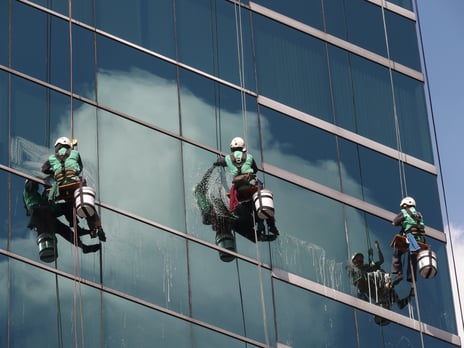
A while back, we shared some important information on the importance of fall protection (ANSI Z359) and what we really need to know. You may remember the ABCD’s of Fall Protection.
If not, here's a quick review:
Fall Protection Basics
Personal Fall Arrest Systems (PFAS) are made up of 4 major components:
- Anchor: This is your secure point of attachment that will support an intended load. The anchorage connectors will vary due to industry needs.
- Body Wear: Think harness. This is typically the support device that will help distribute fall force over multiple points of the body (upper thighs, pelvis, chest and shoulders).
- Connectors: Connectors are lanyards or lifelines that connect a worker’s harness to the anchor.
- Descent & Rescue: It cannot be stressed enough about how crucial it is to have the proper devices in place to either raise or lower a fallen worker to safety.
This time, we want to highlight the importance of an often neglected aspect of PFAS: Rescue. There are a couple of things we need to consider when we think about rescuing fallen workers. It's a situation that no one wants to face on the job but the reality is: accidents can happen. While certain conditions may be the same day-in and day-out, there are environments that change on a day to day basis, sometimes even hourly.
Ask yourself these questions when evaluating a jobsite:
- What are the hazards that exist?
- Can a worker rescue themselves?
- Does the worker need assistance?
- Are they at risk of losing consciousness?
Think about building a house. One day it seems like nothing is going on, then the next day, there's a roof. Well, that roof now presents a new challenge in the event of a fall. How can we plan to assist the worker if we can’t use the scissorlift we could have used yesterday? What’s the next option? These are necessary plans that need to be in place before disaster strikes. A worker has a small window of time between the actual fall and the rescue to avoid serious injury. And if shock comes into play, your options greatly decrease.
The Overlooked Aspect of Fall Protection
It is important to think about how fall protection actually works. Many times the risk of Orthostatic Intolerance, or Suspension Trauma Syndrome, is likely when a worker remains suspended after a fall and for an extended length of time. Body wear used as fall protection can actually cause pressure on vital arteries in critical places, especially the femoral artery in the crotch area. If this type of arterial injury occurs, the worker runs the risk of fainting, oxygen deprivation, hypotension, numbness of legs and if the blood is allowed to continue to pool in the legs, permanent damage or even death.
So what do you need to know to plan ahead? Well, you need to keep the pressure off of these vital arteries by providing the worker with suspension trauma straps or ladders to keep the legs elevated. By giving the worker the ability to lift their legs and keep them mobile while reducing the restriction of blood flow, you decrease his risk of injury. Once you've ensured that he's not at risk of Orthostatic Intolerance, you can now focus on safely assisting the worker to safe ground with ropes or pulleys.
Take a look at some of these fall protection products—they're great options when it comes to rescue operations:
Suspension Trauma Safety Straps: Allows worker to stand up in harness, relieving pressure on vital arteries and veins. Strap allows increased comfort and improved circulation.
Rollgliss™ R550 Rescue and Descent Kit: Fully automatic controlled descent provides emergency rescue and evacuation from a variety of elevated work areas.
Peakworks Confined Space Kit: the 7’ Tripod features a unique built-in pulley system located above the head assembly for excellent operator balance and increased head room. The system withstands the required 5,000 lbs. of vertical pull and includes a recovery style SRL.
Think ahead and have a rescue plan in place for the hazards that your workers may encounter. Keep in mind that circumstances change, so be able to adapt. It is not enough to rely on fall protection body wear.
Minutes can make all the difference between a successful rescue and someone losing their livelihood or even their life. Waiting until an accident happens – your heart is racing and your head is spinning – and then trying to come up with a plan of rescue isn’t just irresponsible, it’s deadly.
That’s why training is the MOST important part of Rescue. Regularly train your workers on what can happen, how to deal with various situations when they come up and how to use the equipment that can save a fallen worker’s life. It's just the right thing to do.
Safety: It's Your Life, It's Our Business.







